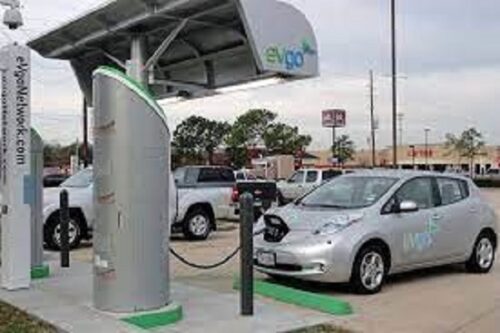Electric Vehicles (EVs) are fast emerging as the vehicle of choice across multiple applications, and the organized last-mile delivery space is likely to dominate 25% of sales by 2025, according to a report titled ‘Electric Vehicles: Future of Last-Mile Deliveries in India’, published today by the Boston Consulting Group (BCG).
The growing popularity of EVs in the last mile delivery segment can be gauged from the multiple ‘Proof of Concepts’ (PoCs) being carried out and the ambitious fleet electrification commitments by key players in food, grocery and e-commerce delivery. Food delivery aggregator Zomato, for instance, has announced 100% electrification of its fleet by 2030, while grocery delivery service provider Big Basket has announced >70% fleet electrification by 2024, indicating a huge market opportunity for the EV ecosystem.

BCG has undertaken extensive primary and secondary research to decode this space – 40+ industry experts have been interviewed including senior executives from OEMs, delivery platforms, energy & battery players and EV asset operators. 50+ EV drivers have been interviewed to understand usage patterns and on-ground challenges. The report highlights the reasons for the popularity of EVs in the organized last-mile delivery market, the emerging shifts in market dynamics and the actions that the key players of the EV ecosystem must undertake to capitalize on this opportunity.
Natarajan Sankar, Managing Director & Partner and Lead, Auto and Mobility practice, BCG India said, “Last-mile deliveries are set to experience significant growth over the next five years, with a CAGR of 15-20% across a wide range of applications. For instance, the food delivery sector is projected to see a CAGR of 30% during this period. This robust growth along with supporting regulatory measures, will drive the need and demand for expanded delivery fleets, leading to a 20-30% increase in adoption of EVs by 2025.”
The report points out that the environmental benefits of EV deployment are not the sole determinant but financial benefits in the longer term owing to the reduced total cost of ownership (TCO) over internal combustion engine (ICE) vehicles plays a significant role. Moreover, various regulatory measures by the Central and State Governments in the form of subsidies and adoption mandates are driving factors behind EV adoption.
The report further throws insight into shifts in market dynamics, especially ownership patterns and operating models, owing to fleet electrification.
Some of the key findings that the report revealed are:
- EV ownership models are different from ICE vehicles: The report points to lower ownership by driver owners owing to higher upfront costs, perceived uncertainty about technology, range anxiety, and limited awareness of TCO benefits. These factors have paved the way for EV asset operators to purchase vehicles and offer fleets on rental contracts.
- The increasing role of delivery platforms as influencers: Vehicle models are no longer chosen solely based on recommendations from dealers; end-customers — such as e-commerce, and food delivery platforms — act as influencers and drive vehicle selection for their fleets. They conduct pilot programs with original equipment manufacturers (OEMs) to identify the best-suited models for their usage and unit economics, based on which they make purchase recommendations. OEMs must factor in this trend in laying out market strategies.
- Growing need for ‘fit-for-purpose’ vehicles: Research indicates higher demand for 2-wheelers, as these models are used for both delivery and personal usage. Delivery personnel have unique needs, including large storage space, good pickup even after putting in heavy load, customizations like backrest for usage over longer periods etc., and at the same time, use the vehicle for personal commute after work. Therefore, the design of the vehicles needs to factor in the purpose of end-users.
- Potential to deepen TCO benefits by improving EV utilization: There is potential to increase utilization (km covered/day) by 50% by cross-utilizing vehicles across applications to minimize downtime. EV asset operators serving numerous customers are best suited to implement this, given they serve multiple customers.
Such shifts require a recalibration of strategies of OEMs, EV asset operators and other players. OEMs cannot continue to rely on conventional dealer-driven channels and will need to reimagine GTM (Go-to-market). They also need to focus on product strategy for this segment. EV asset operators must be able to differentiate their value proposition to play a more significant role in a maturing market. Delivery companies e.g., e-commerce firms need to adopt a concerted approach to increase EV adoption and achieve their targets.







